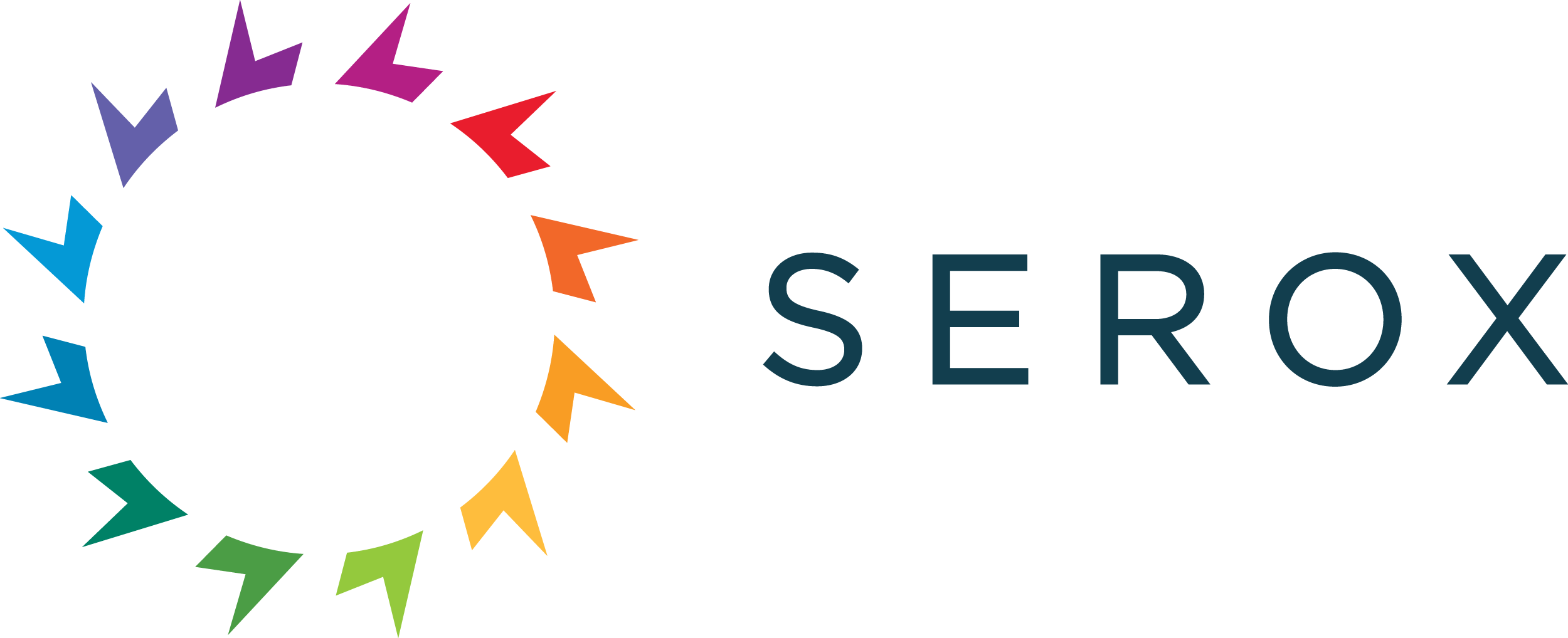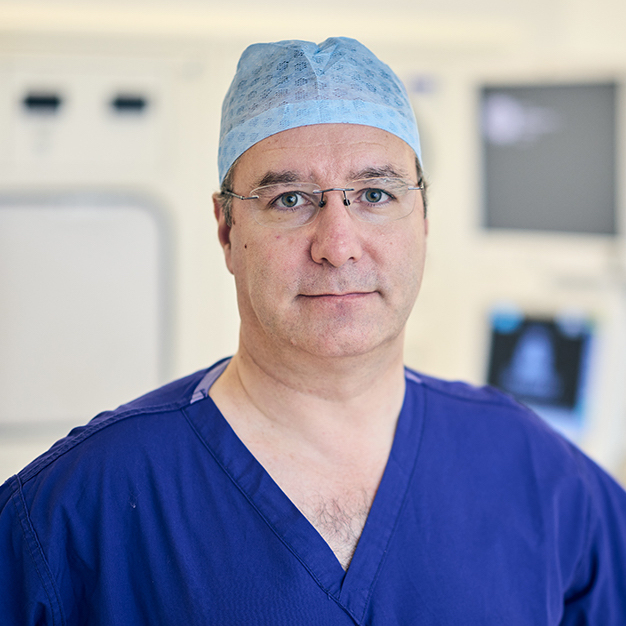
Serox are pioneering the future of diagnostics with cutting-edge technology designed to transform healthcare. This video series takes you behind the scenes of their mission, technology, and vision - showcasing how they are tackling some of the most urgent challenges in diagnostics today.
The Problem We’re Solving: Why the World Needs This Now
Why is early diagnosis so critical in modern healthcare? In this episode, Susannah de Jager and Cici Muldoon shift the conversation to the why behind Serox’s groundbreaking diagnostic technology. They explore the urgent need for more accessible, less invasive, and cost-effective screening methods to tackle life-threatening diseases like cancer.
Cici explains that early detection saves lives—catching cancer at stage one can increase survival rates to 90%, whereas late-stage detection can reduce survival chances to just 10%. However, national screening programmes for breast, cervical, and colorectal cancer suffer from low uptake rates, largely due to the invasiveness, discomfort, and cost of existing diagnostic procedures. The episode highlights how Raman spectroscopy can replace risky, painful, and expensive tests with a faster, simpler, and more accessible alternative.
The discussion features insights from medical professionals, including Giles Bond-Smith, Professor Ben Turney, and Professor Adrian Harris, who emphasise the cost-saving potential of urine-based diagnostics and their ability to streamline healthcare systems. With the possibility of at-home testing and mail-in sample collection, this innovation could also democratise access to diagnostics worldwide, benefiting underserved populations.
[00:00:00] Susannah de Jager: We've covered the what, and we've looked at how it's going to be applied to the problem of mass diagnostics, but now we're gonna come on to why. So Cici, you've got this amazing technology, Raman spectroscopy, that you are able to now apply outside of a lab. Why is this important? We have diagnostics already.
[00:00:22] Cici Muldoon: So early detection is absolutely paramount. If you catch cancer at stage one, oftentimes the chances of survival are 90%. If you catch it at stage four, oftentimes the chances of survival are 10%. So early diagnosis is absolutely crucial. We've heard just recently in the Darzi Report. That cancer diagnoses at stage one and two have made absolutely no progress between 2013 and 2021.
There's a massive imperative, particularly in this country, to diagnose people earlier. Now, there are three screening programs nationally for breast, cervical, and colorectal cancer, and none of those have fantastic uptake rates. But particularly with colorectal cancer you see uptake rates at around 50 and 60%.
Now why is that? Because people normally, don't want to go play around in their poo, and then if they find out that something's wrong, they certainly do not wanna have a colonoscopy. So the idea here is to avoid risky, invasive, painful, and expensive procedures with something that is better, faster, cheaper, and earlier.
[00:01:29] Giles Bond-Smith: One of the biggest blockers that we have in the NHS is when the patient arrives, it's time to diagnosis. That's what we're looking to try and achieve. Turn the patient over, either admit them or discharge them as quickly as possible. In order to do that, we have to have results, and that can be biochemistry, hematology results, as well as radiology, and what Serox does is gives us a painless, easily usable device to get a set of results that will help us make a diagnosis and turn the patient over much, much quicker.
[00:02:01] Cici Muldoon: The other reason this is very important is if you think of cases like, for instance, prostate cancer, normally to determine whether you have prostate cancer or not, you're referred away for a prostate biopsy. Now, increasingly, people are wanting to not wait for that prostate biopsy or not go through the experience of it and its risks and turning to MRI. Now, what happens when all those people go get an MRI? It gums up the system and it drives those long waiting lists even longer because people who are waiting to have an MRI now have to wait for those people who are having it, that could have had a test at a GP surgery that determines that they don't need to have a prostate biopsy.
[00:02:40] Ben Turney: Around one in eight men, in their lifetimes are diagnosed with prostate cancer and a lot of men have anxiety about prostate cancer if they have urinary symptoms. Currently, really the screening test we have is the PSA, Prostate Specific Antigen blood test. But this is not very specific and often men who've got a raised PSA come for further testing.
Typically that would be an MRI scan in the first instance, and then depending on the results of that, they may proceed to prostate biopsies. Again, it would be useful to have a point of care test, on the urine for these men, and if that could add to the screening paradigm, then that'd be very useful to triage these men into appropriate investigations and treatment.
[00:03:22] Scott Sherwood: I think this will generate enormous cost savings. I mean, if you look at what we're projecting as the cost of a Serox diagnostic versus a normal blood test, it's 1/10th to 1/20th the cost, and versus having results in several days, you're having results in minutes.
[00:03:41] Susannah de Jager: So what I'm hearing is that we have existing diagnostics, but a lot of them are super invasive, have risks, have costs, and ultimately could be entirely avoided.
[00:03:51] Cici Muldoon: The idea here is to compliment. So the idea is to drive the right referrals, because sometimes you do need to have a cystoscopy and you do need to have a biopsy. But what you want to do is drive only the people that really need to have those procedures to them.
Everybody wants to have a really low false positive rate, a really low false negative rate, and it's about balancing those two out because the last thing you want to do is not catch people. You wanna rule people out, you don't want them to have a disease and you missed it. But by the same token, it's a massive burden on the healthcare system and you don't want to overload. So it's a fine line between those two things and I think we can work in concert with existing diagnostics in order to improve the overall outcomes.
[00:04:36] Susannah de Jager: It sounds amazing. We obviously are really familiar with phlebotomy, the use of blood for diagnostics. What's the advantage of what you're doing in using urine?
[00:04:45] Cici Muldoon: So as I mentioned previously, the technology is disease agnostic and biofluid agnostic. That means that in our roadmap. We have the intention to look at saliva, urine, and blood. That said, we've decided to start with urine because we think it's very compelling in the sense that a blood test requires a trained phlebotomist to take your blood, which is a cost.
Two, it requires patient transit to clinic in order to have the blood test, and then crucially sample transit to lab in order for that sample to be analysed. Three, it's invasive. It still carries an infection risk, and crucially, no one likes having a blood test. A lot of people are afraid of needles and they don't like it. So we see an opportunity to displace blood-based tests with a urine-based test. It doesn't mean that we will never look at plasma. Indeed, there are many benefits to looking at plasma, and we have the intention to look at it. But, as a first use case, urine would be phenomenal.
[00:05:47] Ben Turney: The benefits of urine over blood testing one is obviously you don't have to take a blood sample. So urine is a natural waste product, which we produce every day. No one minds giving a urine sample, very easy to collect. The other advantage is that it's, in contact with many of these disease processes. So for things like kidney cancer, bladder cancer, prostate cancer, these organs are all in direct, contact with the urinary tract, and so detecting, any changes, hopefully it's a proximal fluid, so it's right next to these organs, and should be more readily detectable.
Blood is very carefully regulated all the time in homeostatic mechanisms. So many of the biomarkers are perhaps harder to find in blood. The other thing about urine is that, historically it's been quite hard to normalise urine because depending on what you eat and drink, each day the concentration of the urine will change. But with this technology, these variations can be filtered out and normalised and so hopefully we can see signatures that are different between different patients.
[00:06:56] Susannah de Jager: You've spoken before about the fact that urine, you don't even necessarily need to come in to a clinic. So can you talk a bit about that?
[00:07:03] Cici Muldoon: Yes, so there are two different models that we've looked at. One is you come into the doctor's office at point of care and you pee on a stick you put in the machine and you get your answer there. Potentially, we have seen that we are able to preserve the urine on our cartridges for up to 30 days. So there is a world in which this could be a mail-in test. You take your test in the comfort of your own home, it's mailed into a central lab, and then it's tested on that machine.
Now you can see that the prior test would be very feasible in a city or in an urban center where you have lots of doctor's offices and you have accessibility to a GP. But if you're in a remote place geographically, like if you're out in the Midwest in the US and you have to drive hours to a clinic. It becomes very attractive to be able to mail in a cartridge to get your result.
[00:07:53] Susannah de Jager: That's awesome. So it's sort of going to lead to the democratisation of testing and access to medical care for groups that potentially, at the moment, are very shut out from the existing clinician based model.
[00:08:03] Cici Muldoon: Indeed, the idea is to capture more people and capture more of the population.
[00:08:08] Susannah de Jager: Amazing. So you are effectively talking about the potential to democratise access to testing, which could be hugely impactful for people that currently are shut out from the existing healthcare.
[00:08:18] Cici Muldoon: Absolutely, it's all about increasing uptake of diagnostics. Our job is to make it easier for people to be able to detect disease early.
You can think of scenarios where, for instance, in third world, low middle income countries in Africa. People might not have recourse to blood test, and there might not be the infrastructure to send a sample to a lab. These are cases where we see a really compelling need for our technology.
[00:08:46] Susannah de Jager: So the scope of how many people this could improve outcomes for is huge.
[00:08:51] Cici Muldoon: As I mentioned previously, I think the trick here is to work in concert with existing diagnostics, and be able to just step in earlier.
[00:09:01] Adrian Harris: I'm Adrian Harris. I'm the Emeritus Professor of Medical Oncology at Oxford University and formerly Director of the Cancer Research UK Laboratories at the Weatherall Institute of Molecular Medicine.
With the easy availability of a urine test, I think there's great potential there for patients to be much more involved in their own management. If they get new symptoms, for example, they can do something about it right away. A reliable test that's easy to use and has patient direct involvement could make a big difference to spending across the board.
For example, in screening and early detection of disease, earlier detection of disease means smaller cancers, more curable, less treatment needed for patients. In our current breast screening program in England, half of all the tumors are so small they don't need chemotherapy, and they can often get away with minimal treatment. So that's a good example of the value of using tests to screen and get small cancers.
[00:09:59] Susannah de Jager: So somebody sends in, a urine sample, it's really easy, that test is then tested and then when they get called in, they know it's because there's a high probability they really need that further testing.
[00:10:09] Cici Muldoon: Oh, absolutely and even for the physicians and the payers who we have to think about in this journey. We've had conversations with urologists in the US who have said to us, if you could have somebody go into, say, urgent care and have a test that directly refers them to cystoscopy. This negates the need for us to have a first consultation to book them in once they're referred to our specialist practice.
If you think about the payer, on the other hand, the payer would like to have less cystoscopies because they're quite expensive. So they would be very interested in reducing the number of these expensive procedures. So if we drive the right referrals, we are not only referring only the right people and avoiding the pain and anxiety that they would have to have by having a cystoscopy. But we also are saving money for the payer and the life insurance companies.
[00:10:55] Susannah de Jager: As we know. Both very important. Cece, thank you so much. That really illuminates for me as a lay person on why this is gonna amplify and add to the existing diagnostics that are out there.






